So, you want to see a cheap knife? This is a cheap knife.

And it has twice as many ball bearings as your flipper knife. You want to know why?

…Because this knife is also a fidget spinner.
I bought this on Wish in 2019, and I paid $7 for it. Here is the listing for it, if anyone is morbidly curious. Apparently you can’t buy it from there anymore. You could probably find one elsewhere if you looked.
But as usual with this sort of thing our problem is with designation, because it has no brand or real model number that I can find. I did find it here for instance, where it’s called the “CCN-02964,” a moniker which I can find nowhere else on the internet, and is sold for $36.95. But then, that product listing also calls it “titanium” (it isn’t), and “one of a kind” (it isn’t). So make of that what you will. Oh, and I also found this Etsy seller hawking these as “hand made” (which it definitely isn’t) and with enough chutzpah to list the fucking things for $199.
Two hundred smackaroos. For a knife. I bought. On Wish. For $7.
I’m starting to think that maybe I’m in the wrong racket.
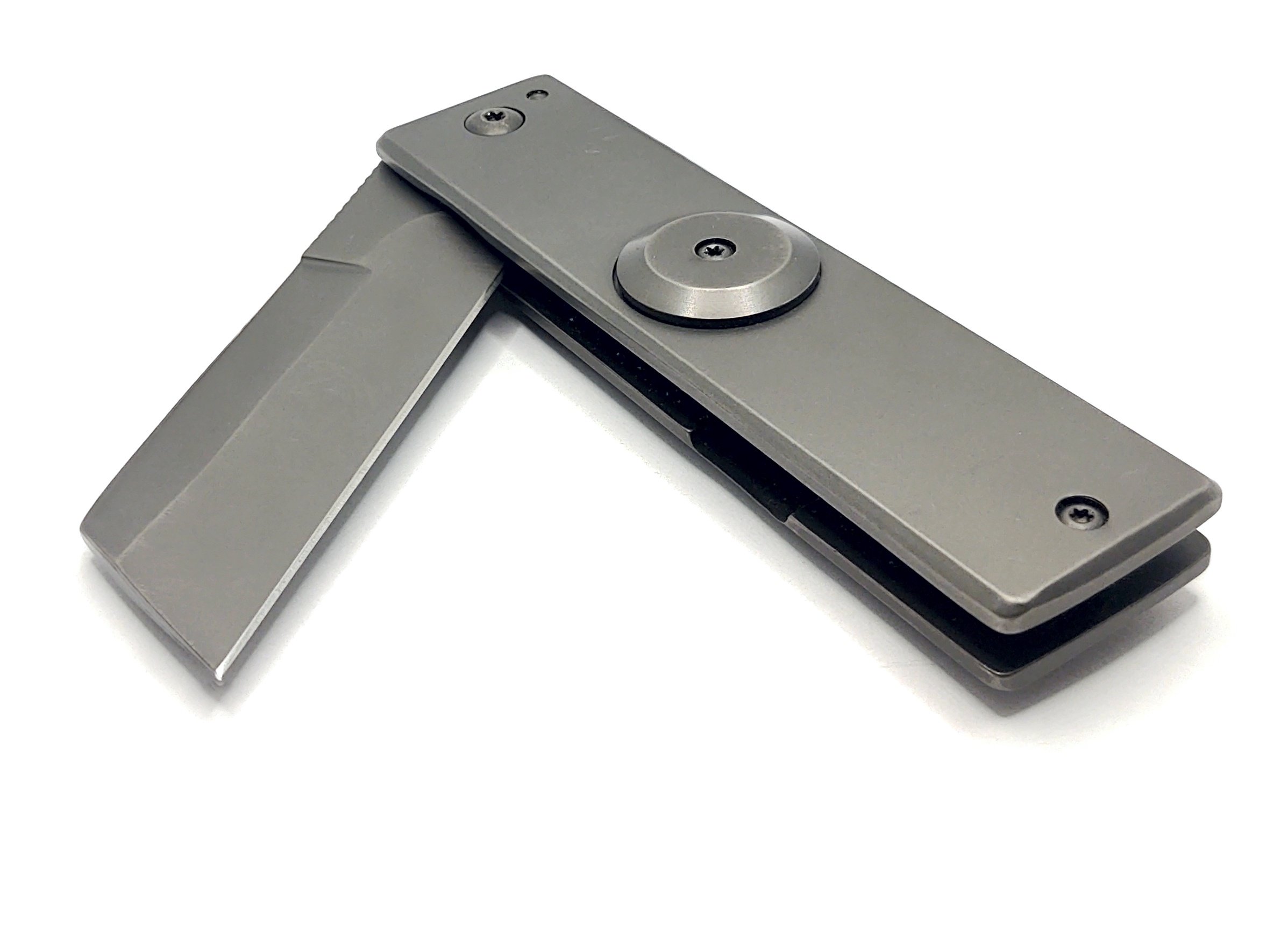
For some perspective, not to mention the delicious incongruity, creating this glamor shot involved the application of software worth a combined total of 104 times the value of this knife.
(This is a “stacked focus” macro shot, where in this instance seven photos bracketed at different focus depths are composited together to create a single unified whole where the entire object is in focus.)
Anyhow. This flipper is a solid metal affair that is neither titanium nor aluminum as various product listings may insist – a magnet sticks to both handle slabs readily – that weighs a solid 134 grams (4.73 ounces) despite being only 4" long when closed. The blade is a 3" long pseudo-Wharncliffe profile that’s actually more like a tanto point but backwards. The blade is 0.110" thick at the root (precisely 2.8mm) with a noticeable false edge on the spine and a small choil. The entire ensemble is 0.394" thick not including the fidget disks, or exactly 10mm. Methinks with those dimensions this was made out of readily available stock to achieve a minimal bill of materials cost. With the disks it’s 0.585" or 14.9mm thick and there is no clip or provision for carrying whatsoever. Probably because such a thing would get in the way.
Here’s another one of them stacked focus shots. This is ever so much fun.
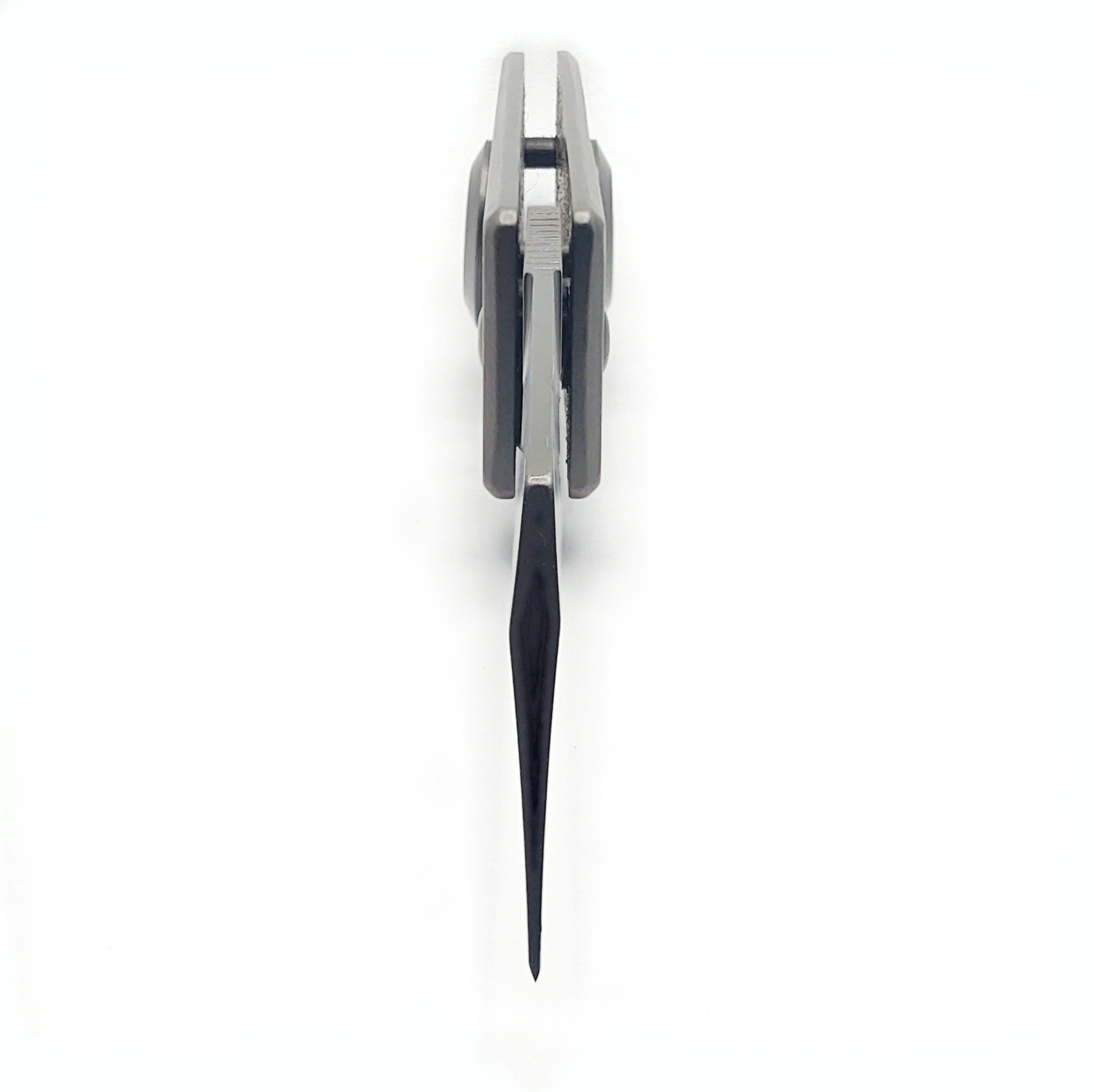
The fidget spinner disks are centered exactly on the handle slabs and, as you would hope, the entire knife spins quite freely on these thanks to some thrust ball bearings underneath. At 4" long it’s a bit of a handful as a fidget spinner, so if you have anything less than monkey paws (which I do, thankfully) you might find it tough to spin.
By the way, giving it the old propeller action while the blade is out is definitely not recommended…
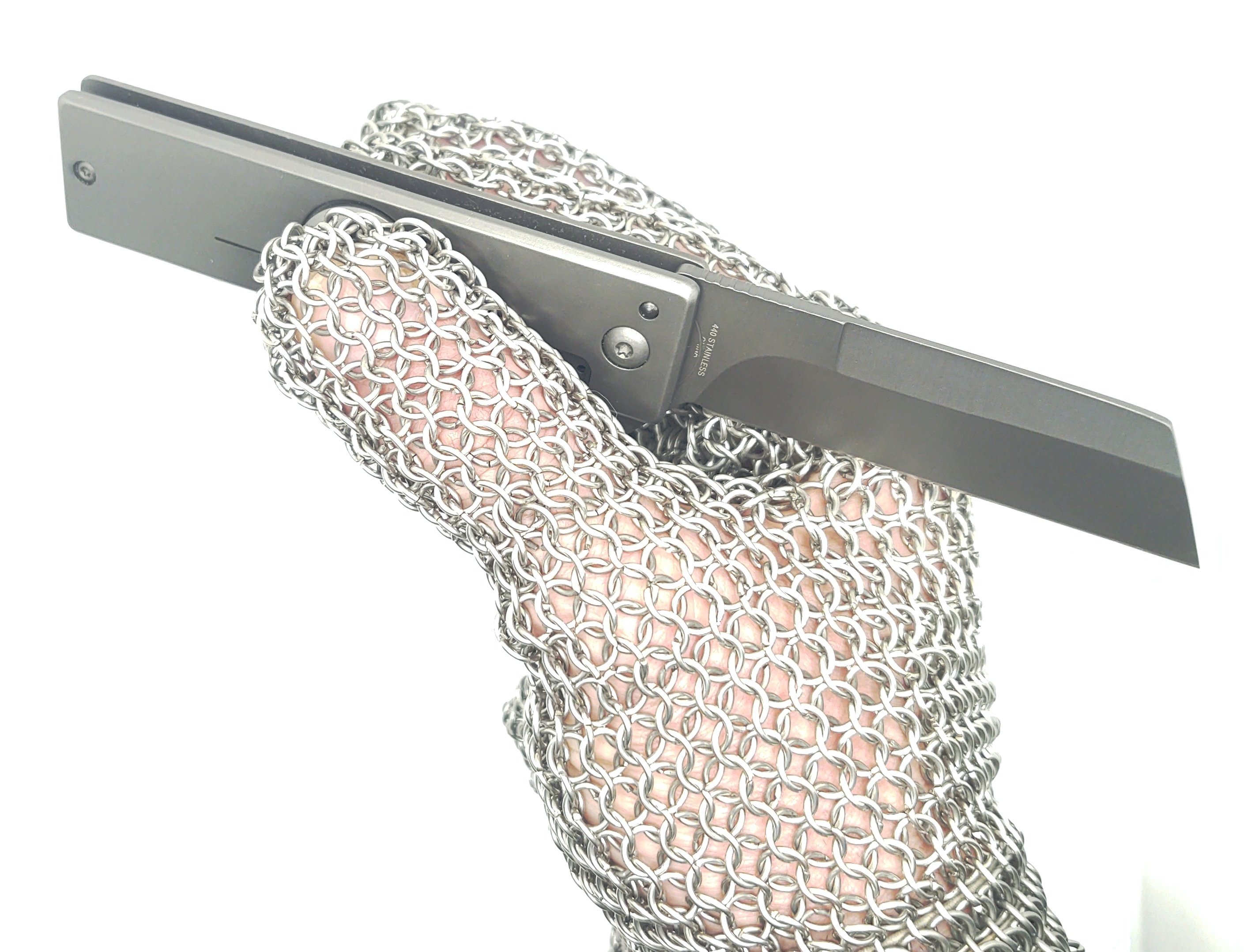
…Unless you have some appropriately bodacious gloves.
There’s no thumb stud and when the blade is closed it’s housed completely within the handles with nothing protruding except the flipper on the back. This is a frame lock knife and, yes, the blade pivots on ball bearings as well. It snaps open quite authoritatively after you overcome the traditional, and very positive, detent nub in the lock.

The lockup is actually reasonably precise and there is no noticeable play either around the axis or across it when the blade is out. Of course, axial play is cheap and easy to deal with when you’re using thrust washers, since you can just crank the hell out of the pivot screw at the factory and the blade’ll still be able to open. But remember, this thing has four of 'em. For $7.

This also means that the blade sits damn near centered between the handle slabs at rest, which is frankly impressive for a knife that costs less than the screwdriver I used to take it apart. (And also a metric a consistently forget to check for, at least in my brand name knives that are not objectively crap.) For those of you used to the ghastly excuses for knives you used to get from the PRC in those dark days of the 90’s and early 2000’s, we’ve sure come a long way.
Oh, and speaking of which.
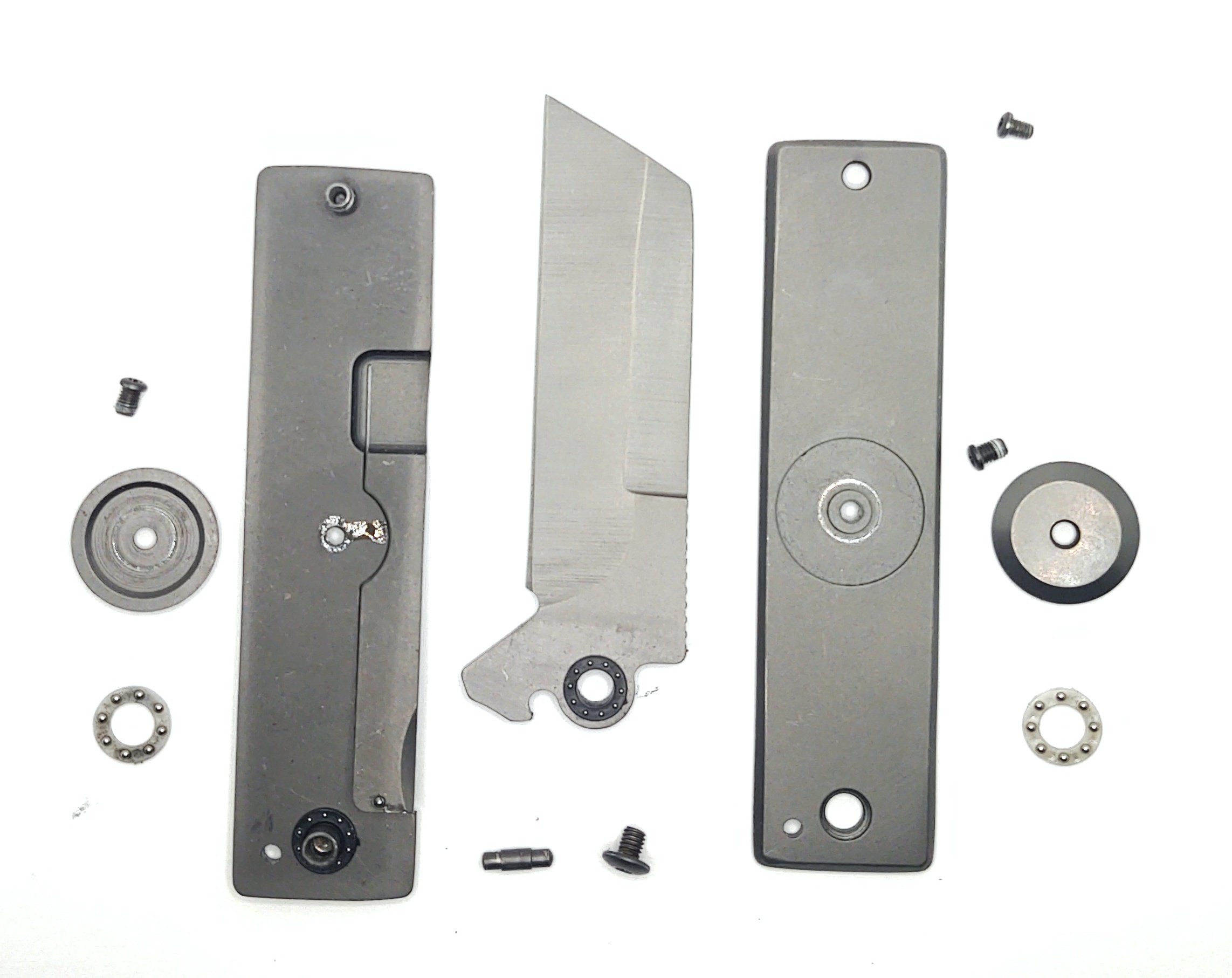
Here’s what you get inside. The knife is held together by only two screws, the big one through the pivot – which is a regular Chicago screw – and a little one in the tail. The other two screws only hold on the fidget disks, and don’t strictly need to be removed to dismantle the knife. There’s a single shouldered pin that serves as the opening end stop for the blade, and that’s your lot.
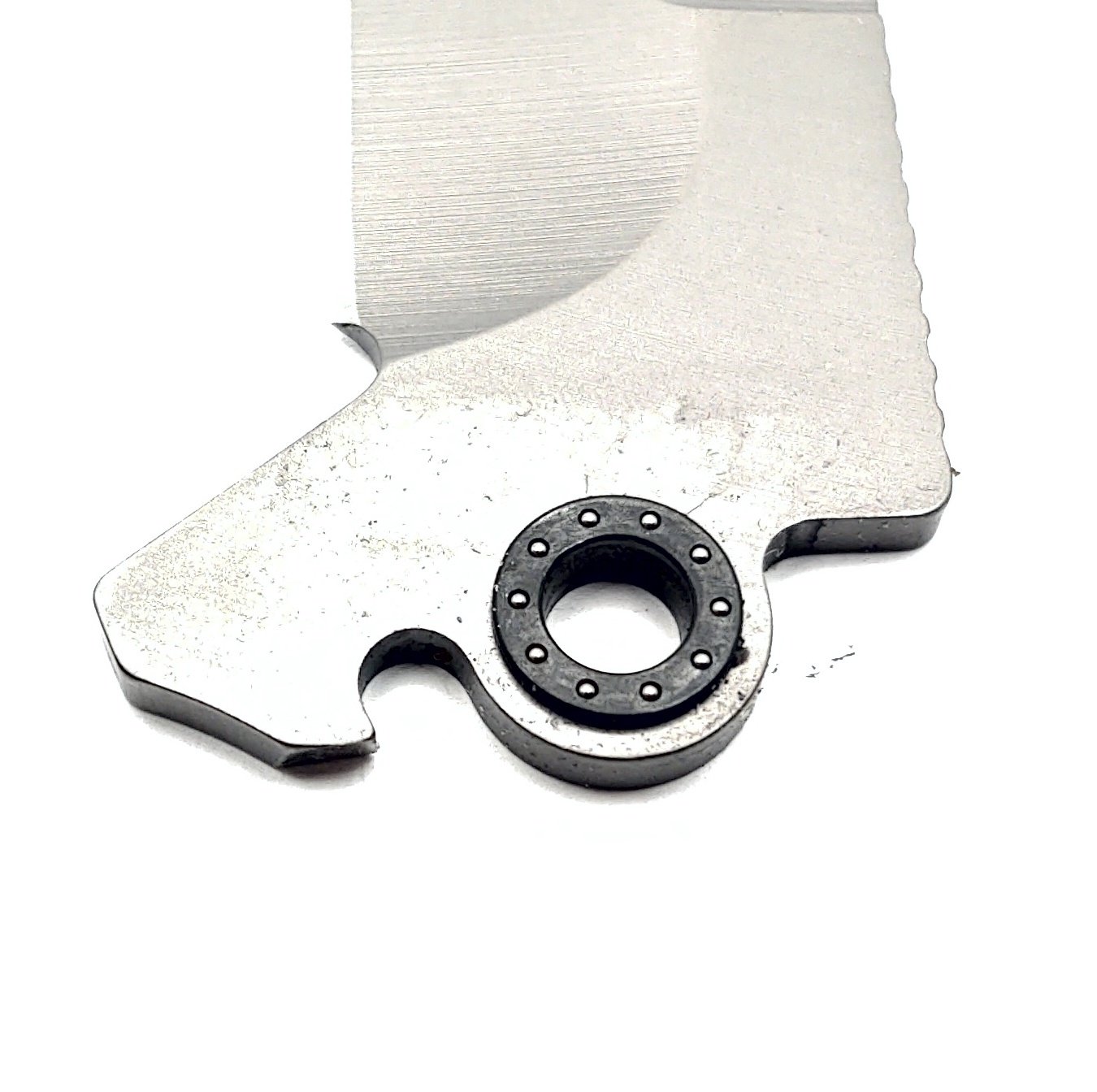
Except for two pairs of honest to goodness thrust ball bearings, with real steel balls and everything. You get two little ones on the blade pivot…
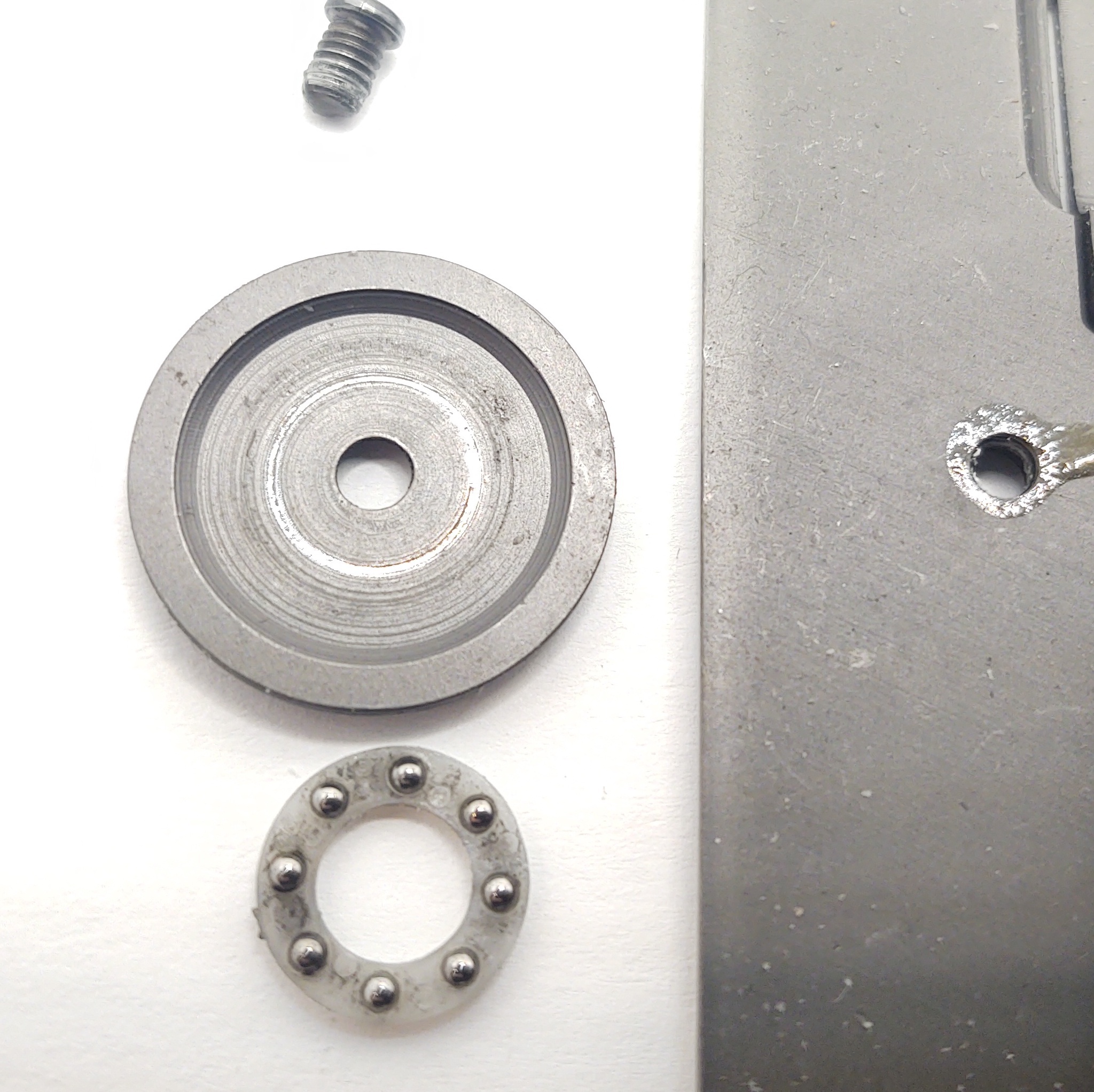
And two bigger ones, one each under each fidget disk.
…
Now I’m going to let you in on a secret. I’ve owned this knife for five years, and I don’t think I’ve ever cut anything with it. At most, an envelope or two (although it probably has about 48 million revolutions on the spinner bearings). That means we can still see what the factory edge is like, because I haven’t dulled it nor have I bothered to sharpen it or otherwise fuck with it in any way.

So here we can finally see where the nickel was saved. Various product descriptions call this “razor sharp,” which… As is tradition, it isn’t. The edge is pretty rough and toothy, and largely “feels” sharp by way of effectively having a zillion little micro-serrations in it left by the coarse grind. These won’t last long if you actually used the knife for anything; it’d need a complete real resharpening pretty quickly, I suspect.
You can see the other cost cutting measures in the blade as well. There are quite visible machining marks in the bevel, for instance. No polishing or dressing was done whatsoever, because that sort of thing takes time and care, and time and care cost money. Does it matter, from a functional perspective? No. But you’ll find things like that are what separate premium knives (or even just mid-grade brand name ones) from generic cheap ones.
The Wish listing alleges the blade is 3cr13, but the etching on the blade says 440. Who can say which is true? With these sorts of things, it’s possible that it’s neither. That’s the other thing you get when you buy direct from the Mainland: Each and every specification could be a lie. And probably is. You have to be okay with that when you part with your $7.
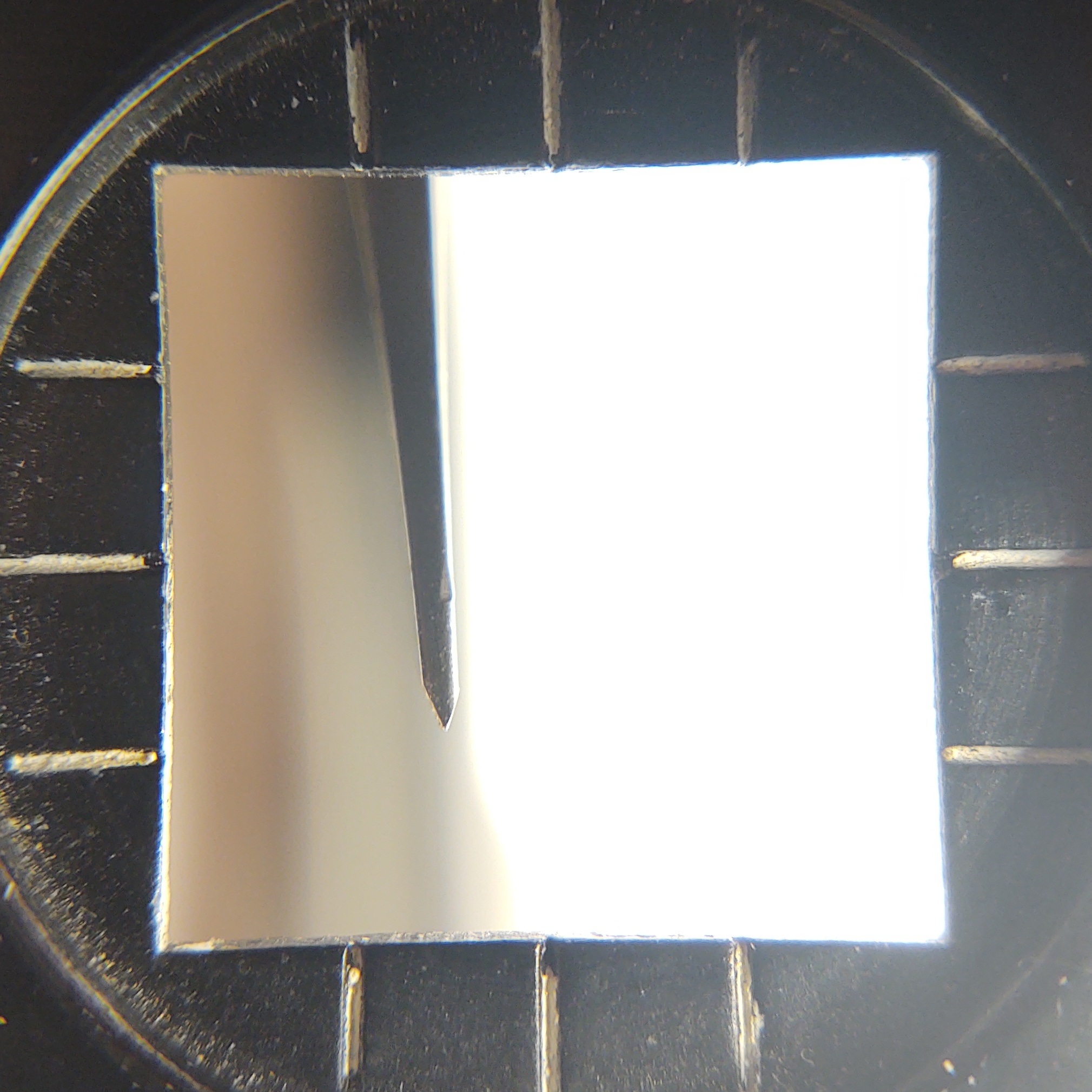
As expected the edge is also quite out of true. Looking down at the edge, the grind on the right is noticeably steeper than the grind on the left, even without magnification. Think of all the fun you could have some afternoon straightening that out.
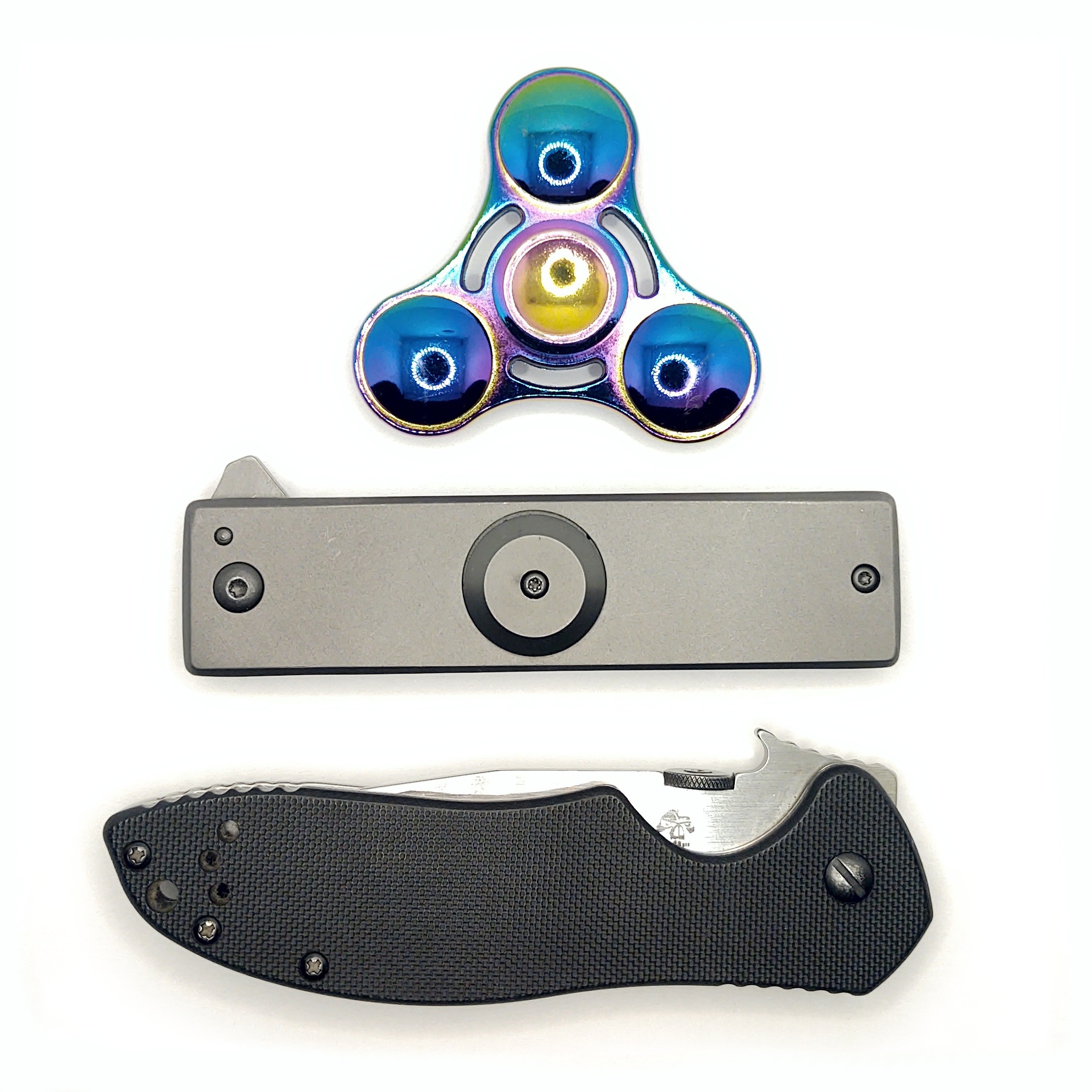
The Inevitable Conclusion
Surprisingly, you get a lot for your money with this thing.
Just because something is cheap doesn’t mean it’s bad. But just because something is not bad doesn’t mean it’s actually objectively good. This zen koan was brought to you by somebody who probably owns way too many shitty knives.


If I had to guess, I would conjecture that this knife is meant to be a knockoff of the JHO Jokr M390. That knife made all the rounds on the blog-o-sphere back when the fidget spinner craze was at its peak, and in the typical Chinese knockoff tradition it seems that someone described one to the factory over the telephone and this is the superficial duplicate we wound up with.
I mean, if that makes you feel any better about the price.
If you just want a fidget knife in general and not this one in particular, they’re still pretty easy to find, and the variation du jour seems to be this daggerlike thing which I’m sure is also a knockoff of something but I’ll be damned if I know what.
I would check the reviews on whatever you buy and see if there are any complaints about the blade flying open when you spin it. That’s definitely not a problem with this knife as it’s got one hell of a detent holding the blade closed, but I’ve read about it happening to people and that’d obviously put a crimp in your day.